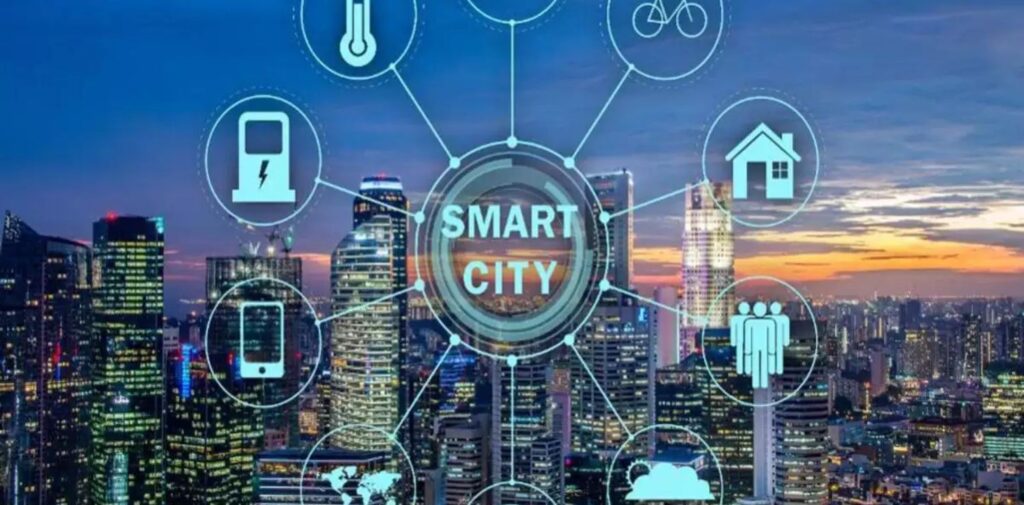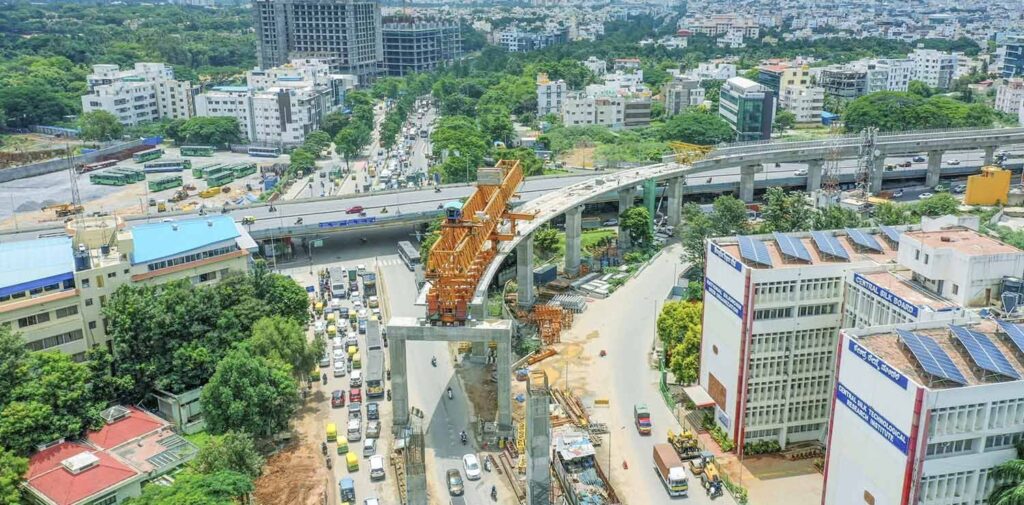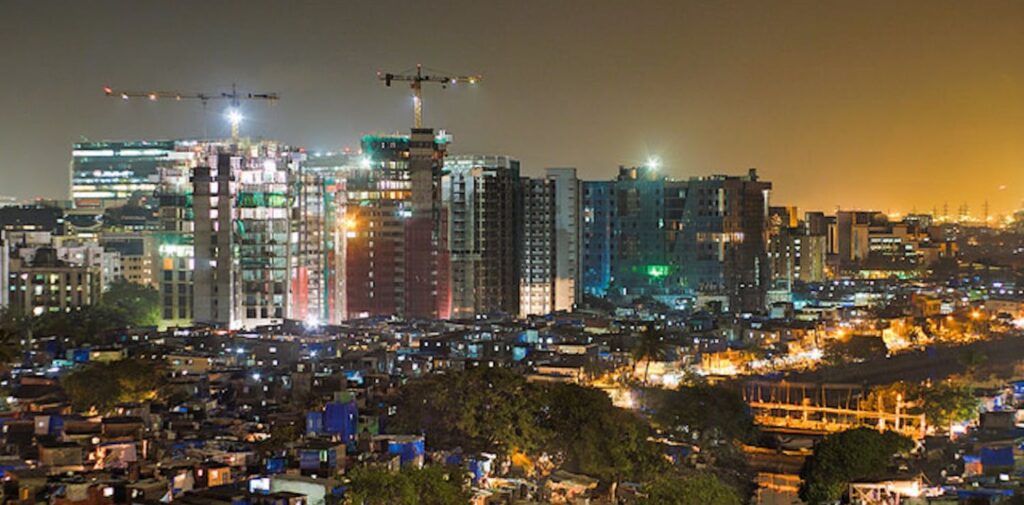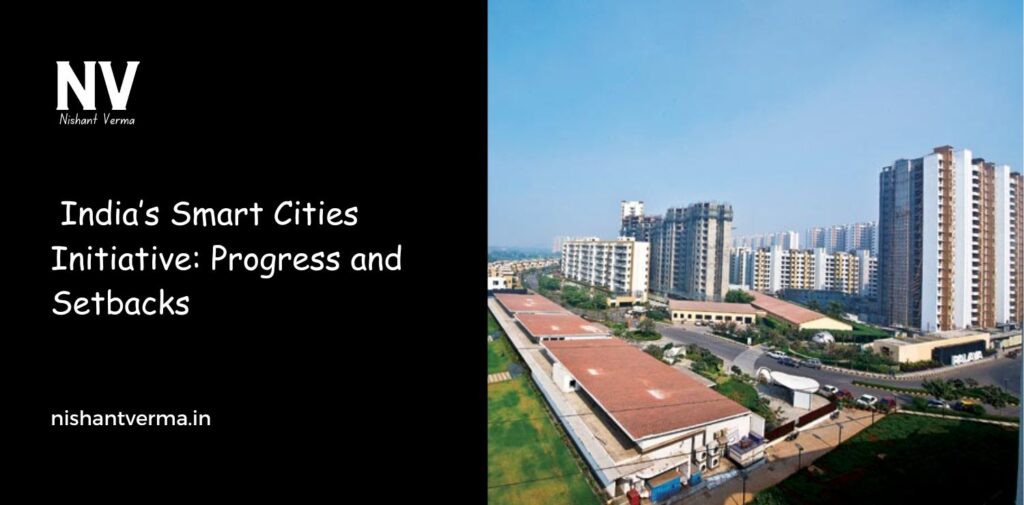India is a country known for its vibrant culture, rich history, and diverse population. As India grows and develops, it faces many challenges, especially in its cities. One of the biggest challenges is how to make cities smarter, cleaner, and more efficient for the millions of people living in them. To tackle this challenge, India launched the “Smart Cities Mission” in 2015. This initiative aims to transform 100 cities into “smart cities” where technology, sustainable development, and improved infrastructure work together to make life better for people. Let’s take a closer look at this initiative, the progress made, and the setbacks it has faced.

What is a Smart City?
A smart city is a place where modern technology is used to improve the quality of life for its residents. It uses information technology to make cities safer, cleaner, and more efficient. Smart cities focus on using digital tools and technology to solve problems like traffic jams, pollution, and water shortages. These cities are designed to make life easier, more comfortable, and more sustainable for the people who live there.
The Launch of the Smart Cities Mission
In 2015, the Indian government launched the Smart Cities Mission to develop 100 cities across the country. The main goal was to create cities that are not only technologically advanced but also environmentally friendly, easy to live in, and sustainable for future generations. The government’s vision for these cities was to make them places with better public services, smarter infrastructure, and cleaner surroundings.
The mission focuses on several key areas such as:
- Improving Urban Infrastructure: This includes better roads, cleaner water, efficient waste management, and affordable housing.
- Promoting Sustainable Development: Smart cities should use green energy, reduce pollution, and encourage the use of renewable energy.
- Using Technology for Better Services: Technology can help improve public services like healthcare, education, and transportation.
- Making Cities Safer: Using technology for surveillance and ensuring that law and order are maintained effectively.

Progress Made Under the Smart Cities Mission
Since its launch, there have been some positive developments in many cities under the Smart Cities Mission. Here are some of the key areas where progress has been made:
Improved Infrastructure
One of the main goals of the Smart Cities Mission is to improve the infrastructure of cities. This includes upgrading roads, water supply systems, and public transportation. Many cities have seen improvements in the quality of roads, drainage systems, and sewage treatment plants. Some cities, like Pune, have worked on creating smarter traffic systems that use technology to reduce traffic jams and make driving safer.
In cities like Ahmedabad, smart lighting systems have been installed on streets to save energy and improve visibility. These lights automatically adjust brightness depending on the time of day or traffic conditions.
Better Waste Management
Waste management has always been a big problem in Indian cities. Under the Smart Cities Mission, some cities have started using technology to manage waste more efficiently. For example, cities like Indore and Surat have set up systems for better collection and disposal of garbage. Indore has even been recognized as one of the cleanest cities in India due to its waste management efforts.
Smart bins that notify authorities when they are full have been introduced in some cities. This helps workers empty the bins on time and ensures that streets remain clean.
Technology for Better Services
In many smart cities, technology is being used to improve services like health care and education. For example, in places like Bhopal, telemedicine services are helping people in remote areas access medical care without having to travel long distances. Similarly, smart classrooms and digital learning tools are being introduced in schools to help students learn better.
Many cities have also introduced smart parking systems, which use technology to help people find available parking spots more easily, reducing the amount of time spent searching for a place to park.
Better Public Transportation
Public transportation is a key focus of the Smart Cities Mission. Cities like Bengaluru and Pune have started using technology to make public transport more efficient. For example, Pune has introduced a smart bus system that tracks buses in real time and gives passengers updates about bus arrival times through mobile apps. Similarly, Bengaluru has been working on creating a smart metro system to help people travel more efficiently around the city.

Setbacks Faced by the Smart Cities Mission
While there has been some progress, there have also been several challenges and setbacks in the implementation of the Smart Cities Mission. Some of these include:
- Slow Implementation: One of the biggest challenges faced by the Smart Cities Mission is the slow pace of implementation. While the government set a target to transform 100 cities into smart cities, only a few cities have made significant progress. The process of upgrading infrastructure, implementing new technology, and ensuring the involvement of local authorities has taken longer than expected. Many cities have struggled with delays in the construction of roads, water supply systems, and other infrastructure projects.
- Lack of Funds: Building smart cities requires a large amount of money, and sometimes, cities do not have enough funds to complete the projects. Although the central government provides financial support, the state governments and local authorities are often responsible for raising additional funds. Some cities have faced difficulties in raising the necessary funds to carry out projects like improving public transport or upgrading drainage systems.
- Bureaucratic Delays: India is a large country with a complex bureaucracy, and getting things done in such a system can be slow. Smart city projects require approval from multiple levels of government, which can lead to delays. In some cases, the lack of coordination between the central and state governments has caused setbacks in the implementation of the mission.
- Issues with Land Acquisition: Another challenge is the issue of land acquisition. To build new infrastructure like roads, parks, and residential areas, the government often needs to acquire land. However, this process can be complicated and time-consuming, especially when it involves relocating families or businesses.
- Digital Divide: While technology is a major part of the Smart Cities Mission, not everyone in India has equal access to it. People living in rural areas or from low-income groups often do not have access to the internet, smartphones, or other technologies. This creates a digital divide, making it difficult for some people to fully benefit from the smart city projects.
Conclusion: The Way Forward
India’s Smart Cities Mission has shown promise, but there is still a long way to go. The progress made so far is encouraging, but the setbacks highlight the need for better planning, faster implementation, and more resources. The government must address the challenges of slow implementation, funding issues, and bureaucratic delays to ensure that the mission reaches its full potential.
The success of the Smart Cities Mission will depend on the active participation of both the government and the people. If citizens actively engage with these projects, they can help make their cities smarter, cleaner, and more livable. It is important to keep in mind that building smart cities is not just about technology—it’s also about improving the lives of the people who live there.
As India continues to grow and urbanize, creating smart cities will become even more important. With the right approach, the dream of transforming India’s cities into smart, sustainable, and efficient places can become a reality.




